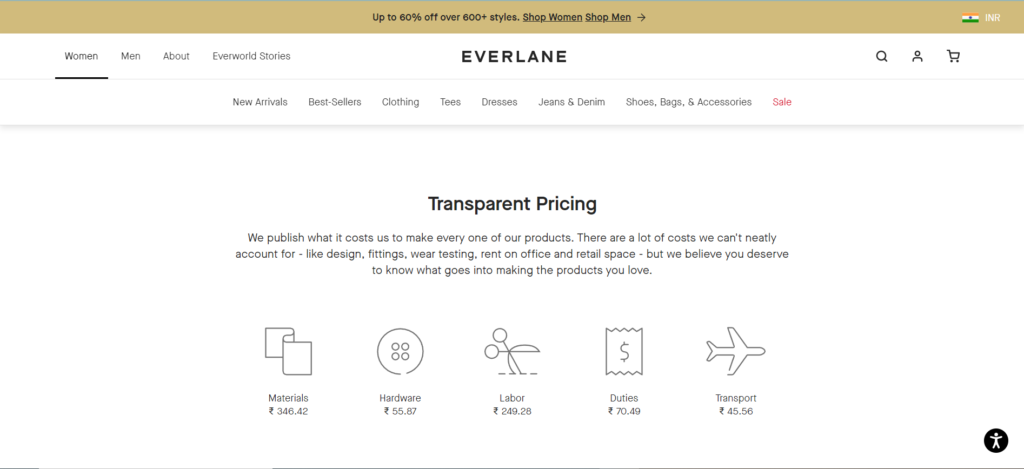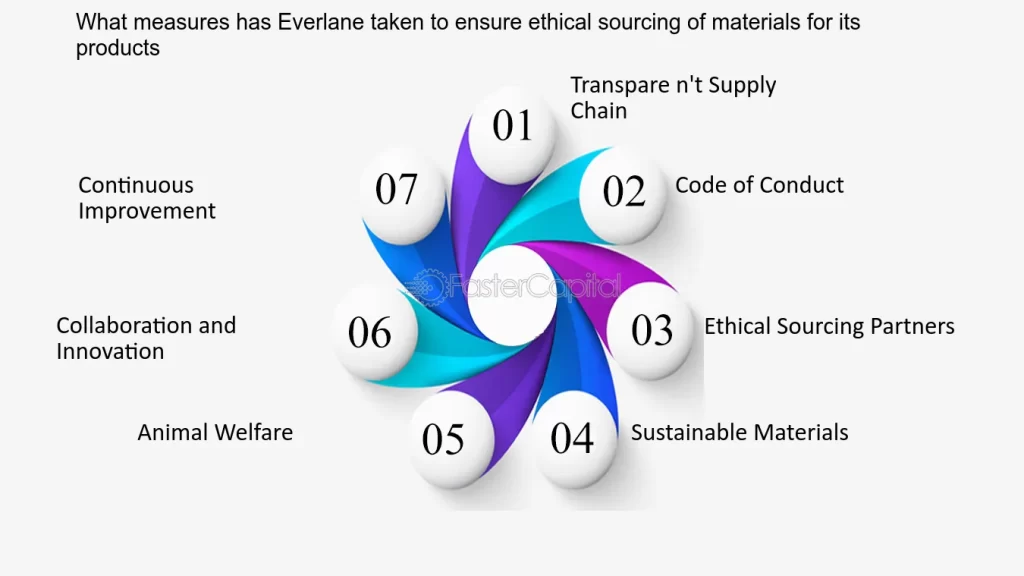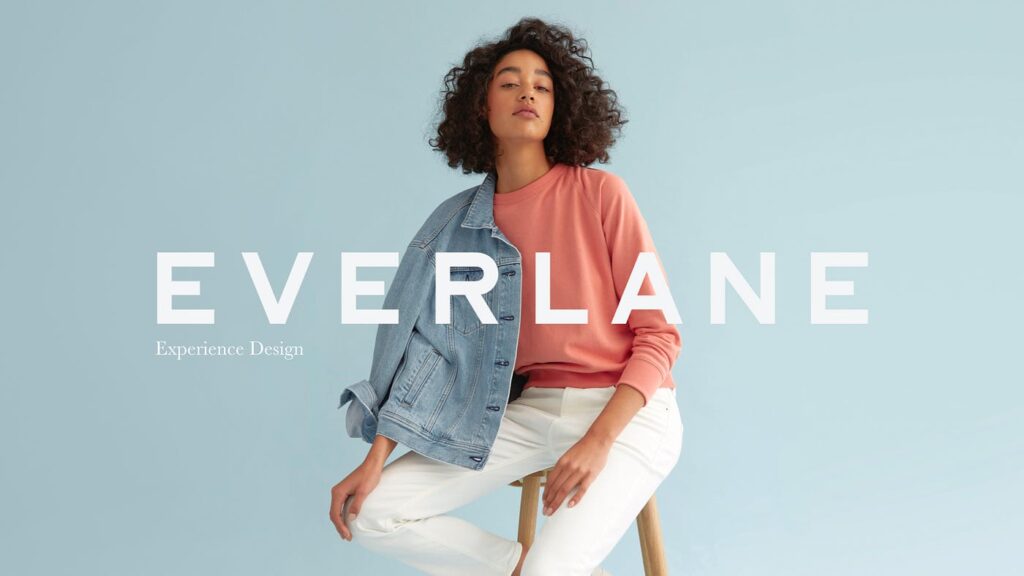Everlane isn’t your typical clothing company. Founded in 2010 with a focus on radical transparency, this American retailer built its reputation on shaking things up in the fashion industry. Headquartered in San Francisco, Everlane offers a curated selection of clothing and accessories primarily through their online store, with a growing number of physical locations throughout the United States. But what truly sets Everlane apart is their dedication to ethical production practices and a commitment to showing you exactly how much it costs to make the clothes you wear. By publicly displaying factory costs and profit margins alongside each item, Everlane challenges the traditional retail model and empowers consumers to make informed purchasing decisions.

This focus on transparency extends beyond pricing. Everlane partners with ethical factories around the world, and they share details about these partnerships on their website. You’ll find information about the working conditions, wages, and environmental impact of each factory involved in producing an Everlane garment. This commitment to ethical sourcing allows Everlane to prioritize quality materials and construction, ensuring their clothing is built to last.
Everlane’s approach to fashion goes beyond just transparency and ethics. They’ve carved out a unique space in the market by offering high-quality wardrobe essentials with a timeless aesthetic. Their collections focus on clean lines, neutral colors, and versatile pieces that can be easily mixed and matched. This commitment to a core aesthetic ensures that Everlane pieces won’t go out of style after a single season.
Everlane’s dedication to sustainability is another key differentiator. They use recycled materials whenever possible and are constantly seeking out innovative ways to reduce their environmental footprint. The company publishes an annual sustainability report that details their progress towards their environmental goals.
However, Everlane hasn’t been without its critics. Some have questioned the authenticity of their transparency claims, while others have pointed out that their focus on basics can feel somewhat limiting. Additionally, as the brand has grown in popularity, there have been concerns about maintaining their commitment to ethical production at scale.
Despite these criticisms, Everlane remains a significant force in the fashion industry. Their commitment to transparency, ethics, and sustainability has resonated with a generation of consumers who are increasingly conscious of the impact of their clothing choices. Everlane has proven that it’s possible to create high-quality, stylish clothing while also prioritizing ethical and sustainable practices. Whether you’re a longtime Everlane fan or just curious about the brand, there’s no denying that they’re a company worth watching.
Target Audience of Everlane
Everlane caters to a specific customer with a strong conscience. Their target audience prioritizes both environmental and social responsibility in their clothing choices. This means they’re willing to pay a premium for high-quality, everyday essentials made with sustainable practices and ethical manufacturing. Everlane focuses on timeless designs built to last, rejecting fast fashion trends in favor of classic pieces that can be mixed and matched for a long lifespan.
Millennials are a major demographic for Everlane. This generation is particularly concerned with sustainability and social responsibility, making Everlane’s commitment to these values a major draw. Everlane understands that millennials are also a powerful consumer force, projected to become the biggest demographic by the end of 2019. Building brand loyalty with this group is crucial for Everlane’s long-term success.
While millennials are a core audience, Everlane’s reach extends beyond. Their thoughtful approach to customer experience attracts a wider range of ages, from 20 to 60. These consumers share a common desire to make a positive impact but may not have the time or resources to delve deeply into sustainable practices. Everlane bridges that gap by offering a curated selection of clothing that aligns with their values. It’s important to note that Everlane positions itself more as a purpose-driven brand than simply a fashion company.
Marketing Strategies of Everlane
Everlane is known for its transparent and ethical approach to fashion, and its marketing strategies are aligned with these core values. Let’s explore them in detail:
1. Transparency and Ethical Sourcing
Everlane has carved a unique niche in the fashion industry by prioritizing transparency and ethical sourcing. This commitment is woven into the very fabric of their business model, with three key principles guiding their approach: knowing their factories, understanding their costs, and fostering a relentless pursuit of improvement.

Firstly, Everlane champions radical transparency when it comes to their factories. They shed light on their supply chain by publicly disclosing factory locations and details for each product on their website. This empowers customers to trace the origins of their clothing and make informed decisions about where their money goes. Everlane doesn’t stop there. They hold their suppliers to a strict code of conduct, ensuring fair wages, safe working conditions, and adherence to ethical labor practices throughout their manufacturing process.
Secondly, Everlane prioritizes cost transparency. They break down the true cost of each garment on their website, revealing exactly how much is spent on materials, labor, and other expenses. This empowers consumers to understand the markup typically hidden within traditional retail pricing. No longer are they left in the dark about industry practices. With this knowledge, customers can make informed purchasing decisions, aligning their spending with their values.
Finally, Everlane embraces a culture of continuous improvement with their “Always Ask Why” approach. They constantly evaluate their practices and seek ways to make their business more sustainable and ethical. This commitment to progress extends beyond internal operations. Everlane actively shares their journey and discoveries with their customers, fostering trust and transparency throughout the entire process. This openness allows them to learn from feedback and collaborate with their customer base to find innovative solutions. Everlane’s dedication to constant improvement positions them as a leader in responsible fashion practices.
2. Minimalistic Branding and Design
Everlane has carved a distinct niche in the fashion world through their commitment to minimalism. This philosophy, built on the belief that “less is more,” permeates every aspect of their brand, from website design to product packaging, and most importantly, the clothing itself. By simplifying these elements, Everlane crafts a powerful and memorable brand experience that resonates with their target audience.
Several key components define Everlane’s minimalist approach. Firstly, a restricted color palette reigns supreme. Their website and marketing materials are dominated by black, white, and gray, fostering a sense of clean sophistication. This color harmony eliminates visual clutter and allows the focus to remain on the high-quality materials and construction of their garments.

Secondly, clean lines and simple shapes define both their branding and product design. Their logo is a straightforward wordmark, devoid of unnecessary embellishments. Similarly, their packaging is refreshingly uncluttered, free from busy patterns or excessive graphics. This approach exudes a sense of elegance and modernity, appealing to consumers who value a timeless aesthetic over fleeting trends.
Finally, minimalism extends to their product selection. Everlane offers a curated collection of high-quality wardrobe essentials. These classic pieces are designed to be versatile and transcend seasonal trends, ensuring a longer lifespan in your closet.
3. Direct-to-Consumer Model
Everlane breaks the mold of traditional retail by utilizing a direct-to-consumer (DTC) business model. This strategy eliminates the middleman, such as department stores or boutiques, and allows Everlane to sell directly to customers. By cutting out these retailers and their markups, which can be as high as 50%, Everlane captures significant cost savings. These savings are then strategically passed on to the consumer, offering high-quality products at competitive prices.
The benefits of the DTC model extend beyond just cost savings. Everlane gains significant control over the entire customer experience. They have the freedom to design their website and marketing materials to reflect their brand identity, while also fostering direct interaction with customers through social media and email. This fosters a stronger brand connection and allows Everlane to cultivate a loyal customer base.
Everlane’s success with the DTC model is undeniable. Since their launch in 2011, they’ve experienced rapid growth, solidifying their position as a leader in the DTC space. Their achievement has paved the way for other brands to embrace this alternative approach, proving that the DTC model can be a powerful competitor to the traditional retail landscape.
4. Storytelling and Brand Identity
Everlane’s brand story is a powerful example of how a company can leverage transparency and ethical practices to build a strong identity. Their mission statement, “To make the right choice as easy as putting on a great T-shirt,” sets the tone for everything they do. They believe high-quality, ethically made clothing should be accessible to all, and their storytelling reflects this commitment.
Everlane’s dedication to transparency shines through in their unique pricing model. Their website reveals the true cost of each item, allowing customers to understand exactly where their money goes. They don’t stop there; detailed information about factories and production processes is readily available, ensuring customer confidence in ethical manufacturing practices.
Everlane’s commitment goes beyond just showing their costs. They partner with factories that prioritize fair wages, reasonable working hours, and environmental protection. Regular audits ensure these standards are upheld. This dedication to ethical practices is a core thread woven into the fabric of their brand identity.
By using storytelling to connect with their target audience, Everlane breathes life into their values. Customer stories showcase a community of people who love their products. Factory stories personalize the company and emphasize their ethical commitment. Even product stories, from design to materials, educate customers and demonstrate Everlane’s focus on quality. This authentic, relatable, and consistent storytelling strategy builds trust and strengthens their brand identity.
5. Engagement and Community Building
Everlane understands the power of a connected community. They’ve implemented several programs specifically designed to bring customers together and cultivate a sense of belonging. The Everlane Community, a private Facebook group, serves as a hub for customer interaction. Here, Everlane fans can share experiences, ask questions, and connect with one another, all supported by moderators from the brand itself.
Everlane’s Insider Program transcends simple social connection. This loyalty program rewards customers for their brand engagement. Insiders enjoy exclusive perks like early access to new products, special discounts, and invitations to unique events. This tiered system fosters a sense of value and appreciation for loyal customers.
The Factory Tour Program takes engagement a step further. This program offers a unique opportunity – a firsthand look into Everlane’s factories. Customers can witness the production process and gain a deeper understanding of the brand’s commitment to ethical practices. These immersive experiences solidify trust and transparency, key components of a strong community.
Through these creative initiatives, Everlane goes beyond selling clothes. They cultivate a space for connection, fostering a community of engaged and loyal customers.



